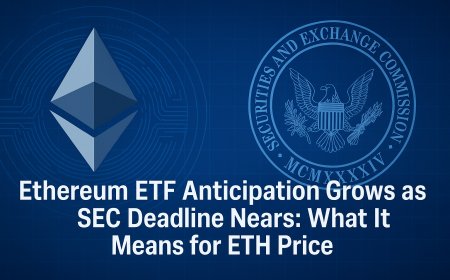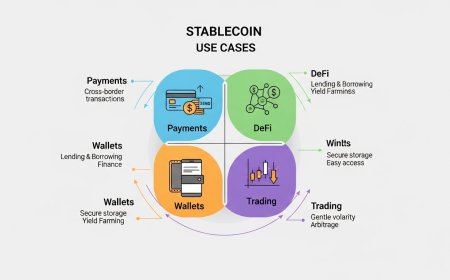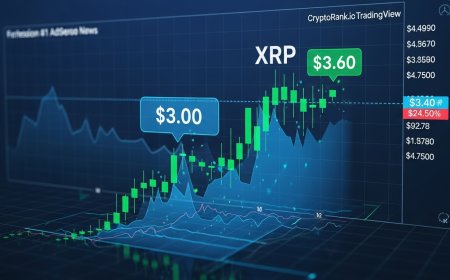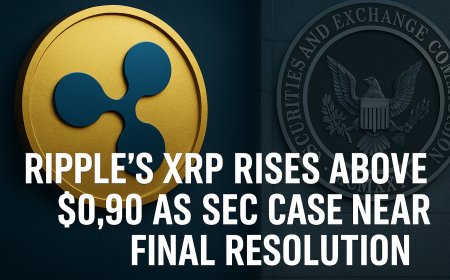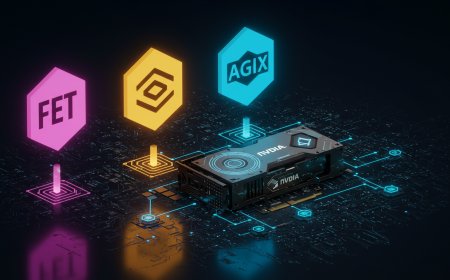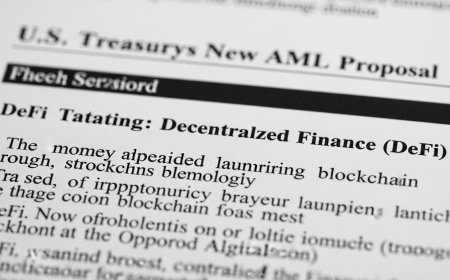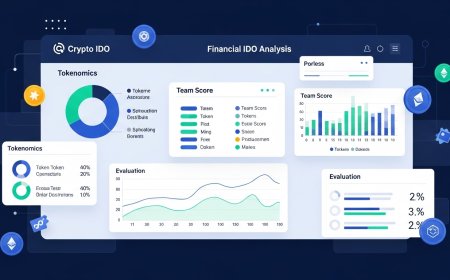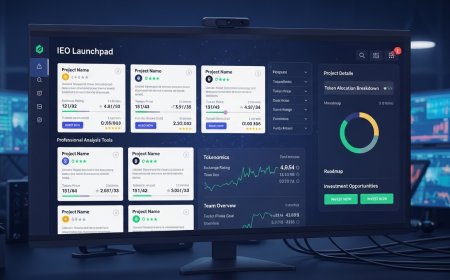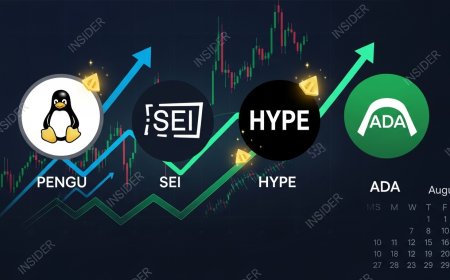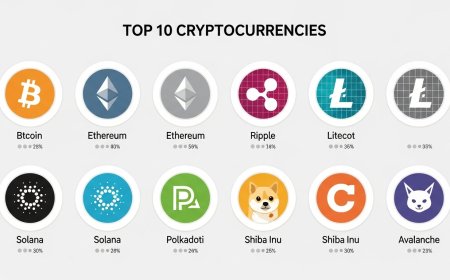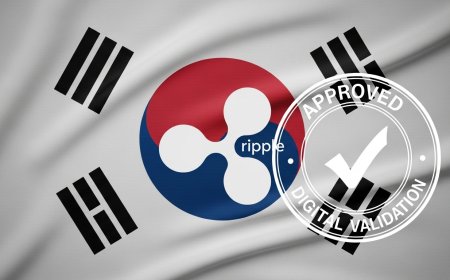How to Evaluate Crypto Pre-Sales in 2025: Complete Due Diligence Guide for Safe Investing
Learn how to safely evaluate cryptocurrency pre-sales with our comprehensive 2025 guide. Discover essential red flags, due diligence checklists, and risk management strategies to identify legitimate opportunities while avoiding scams in today's bullish market. Master crypto pre-sale investing in 2025 with our expert evaluation guide. Learn essential due diligence steps, spot red flags, and manage risks effectively. Complete checklist included for safe pre-sale investments.
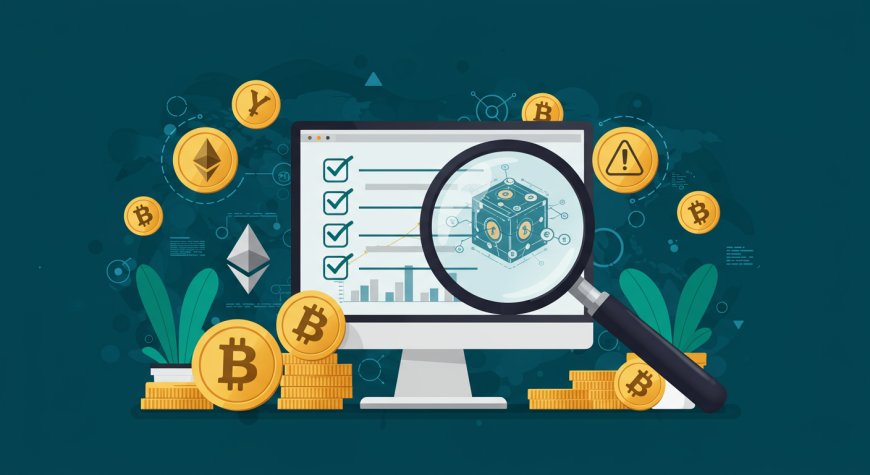
How to Evaluate Crypto Pre-Sales in 2025: Complete Due Diligence Guide for Safe Investing
The cryptocurrency market has reached unprecedented heights in 2025, with Bitcoin surpassing $120,000 and the total market capitalization hitting record levels. This bull market has sparked a surge in new blockchain projects launching through pre-sales, offering early investors the opportunity to purchase tokens before public release.
However, with increased opportunities come heightened risks. The current market euphoria has also attracted numerous fraudulent projects designed to capitalize on investor FOMO (Fear of Missing Out). Understanding how to properly evaluate crypto pre-sales has never been more critical for protecting your investment capital.
What Are Crypto Pre-Sales and Why They Matter
Cryptocurrency pre-sales represent early-stage investment opportunities where blockchain projects offer tokens to select investors before their official market launch. These sales typically occur at discounted prices, providing potential upside for early supporters while helping projects raise development capital.
The appeal of pre-sales lies in their potential for significant returns. Early investors in successful projects like Ethereum, Chainlink, or Polygon saw extraordinary gains from their pre-sale investments. However, the statistics are sobering: research indicates that over 80% of crypto projects fail to deliver on their initial promises, making due diligence essential.
In today's market environment, with improved regulatory clarity and institutional adoption driving mainstream acceptance, pre-sales have become more accessible to retail investors. This democratization of early-stage crypto investing creates both opportunities and challenges for individual investors.
The Current Pre-Sale Landscape in 2025
The regulatory environment has significantly improved following recent legislative developments in major markets. The passage of comprehensive cryptocurrency legislation has provided clearer guidelines for token offerings, reducing some regulatory uncertainty that previously plagued the space.
This regulatory clarity has coincided with record-breaking market performance. Institutional adoption continues accelerating, with major corporations and investment funds allocating portions of their portfolios to digital assets. This institutional validation has increased retail investor confidence, driving more participation in early-stage projects.
However, the bullish market sentiment has also created conditions favorable for fraudulent projects. Scammers increasingly sophisticate their approaches, creating professional-looking websites, whitepapers, and marketing campaigns that can fool inexperienced investors.
Essential Team Verification and Credibility Assessment
The foundation of any successful blockchain project is its team. Legitimate projects typically feature publicly identifiable team members with relevant experience in blockchain technology, software development, finance, or the specific industry their project addresses.
Start by researching each team member's background through professional platforms like LinkedIn, GitHub, and Twitter. Look for verifiable work history, educational credentials, and previous project involvement. Team members should have active professional profiles that demonstrate genuine expertise rather than generic descriptions.
Pay particular attention to the technical team's qualifications. Blockchain development requires specialized skills, and the technical lead should have demonstrable experience with smart contract development, consensus mechanisms, and distributed systems architecture.
Red flags include anonymous team members without valid justification, use of stock photos or generic descriptions, team members with histories of failed projects, or individuals who cannot be independently verified through professional networks.
Some projects legitimately operate with pseudonymous teams for privacy or security reasons, but they should provide alternative forms of credibility verification, such as escrow arrangements, third-party endorsements from respected industry figures, or gradual revelation of team identities as the project develops.
Documentation Quality and Whitepaper Analysis
A project's whitepaper serves as its technical and business blueprint, outlining the problem being solved, the proposed solution, technical architecture, and implementation timeline. High-quality documentation demonstrates serious intent and professional approach to project development.
Analyze the whitepaper for technical depth and clarity. Legitimate projects provide detailed explanations of their technology, including consensus mechanisms, smart contract architecture, and integration approaches. The documentation should address potential challenges and provide realistic solutions rather than glossing over technical complexities.
Business aspects should be equally thorough, including market analysis, competitive positioning, go-to-market strategy, and revenue models. The project should clearly articulate its value proposition and demonstrate understanding of its target market.
Warning signs include vague or overly technical language designed to confuse rather than inform, plagiarized content from other projects (easily detected through plagiarism checkers), unrealistic promises or guaranteed returns, and missing crucial technical details about implementation.
Compare the whitepaper against similar successful projects in the same category. Legitimate projects typically reference relevant academic research, acknowledge existing solutions, and explain their differentiating factors clearly.
Deep Dive Tokenomics Evaluation
Tokenomics—the economic model governing a cryptocurrency—fundamentally determines a project's long-term sustainability and investment potential. Well-designed tokenomics align incentives between developers, early investors, and future users while ensuring sustainable growth.
Examine the total token supply and distribution schedule. Avoid projects where single entities or wallets control majority portions of the token supply, as this creates centralization risks and potential for market manipulation. Healthy projects typically allocate reasonable portions to team members (usually 10-20%), early investors (20-40%), ecosystem development (20-30%), and public distribution (20-40%).
Vesting schedules protect against immediate token dumps by insiders. Look for projects that implement multi-year vesting periods for team tokens and graduated release schedules for large allocations. This demonstrates long-term commitment and reduces sell pressure during early trading periods.
Token utility represents perhaps the most critical aspect of tokenomics evaluation. Tokens should serve clear purposes within the project ecosystem beyond mere speculation. Common utility models include governance voting rights, staking rewards, transaction fees, access to platform features, or medium of exchange within the ecosystem.
Inflation and deflation mechanisms affect long-term token value. Understand how new tokens will be created over time and whether any burning or buyback mechanisms exist to manage supply. Sustainable projects balance incentivizing network participation through token rewards while maintaining long-term value appreciation potential.
Smart Contract Security and Technical Due Diligence
Smart contract security represents a critical risk factor in crypto pre-sales, as vulnerabilities can lead to complete loss of invested funds. The blockchain's immutable nature means that security flaws cannot be easily corrected once deployed, making pre-deployment auditing essential.
Third-party security audits from reputable firms provide independent verification of smart contract code quality. Recognized auditing companies include CertiK, Hacken, Trail of Bits, ConsenSys Diligence, and OpenZeppelin. These firms employ specialized security researchers who systematically review code for common vulnerabilities like reentrancy attacks, integer overflow/underflow, access control issues, and logic errors.
Review audit reports carefully, paying attention to identified vulnerabilities and their severity levels. High-quality projects address all critical and high-severity issues before launching, while medium and low-severity findings should be acknowledged with plans for resolution.
Open-source code availability allows community review and builds trust through transparency. While not all projects can open-source their complete codebase due to competitive concerns, the core smart contracts handling token functionality should typically be verifiable.
Bug bounty programs demonstrate ongoing commitment to security by incentivizing ethical hackers to identify and report vulnerabilities. Projects offering meaningful rewards for security discoveries show serious dedication to protecting user funds.
Multi-signature wallet controls for project funds provide additional security layers by requiring multiple authorized parties to approve transactions. This prevents single points of failure and reduces risks associated with compromised individual accounts.
Market Viability and Use Case Analysis
Beyond technical and team evaluation, assess whether the project addresses genuine market needs with viable solutions. Many crypto projects fail not due to technical issues but because they solve non-existent problems or compete in oversaturated markets.
Research the target market size and growth potential. Viable projects typically address markets with significant total addressable market (TAM) and demonstrate clear paths to capturing meaningful market share. Look for evidence of market demand through user surveys, pilot programs, or early adoption metrics.
Competitive analysis reveals how the project differentiates from existing solutions. While competition validates market demand, projects must articulate clear advantages over established alternatives. These might include superior technology, better user experience, cost advantages, or unique feature sets.
Revenue model sustainability affects long-term project viability. Understand how the project plans to generate revenue and become self-sustaining. Projects relying solely on token appreciation without underlying revenue streams face significant sustainability challenges.
Partnership validation provides market credibility indicators. Strategic partnerships with established companies, integration agreements with existing platforms, or endorsements from industry leaders suggest genuine market interest and adoption potential.
Community Assessment and Social Proof
Healthy project communities indicate genuine interest and organic growth potential. Authentic communities engage in meaningful discussions about project development, provide feedback, and contribute to ecosystem growth rather than focusing solely on token price speculation.
Evaluate community metrics across multiple platforms including Twitter, Discord, Telegram, Reddit, and project-specific forums. Look for consistent growth patterns, active participation in discussions, and engagement quality rather than merely follower counts.
Artificial engagement can be detected through several indicators: sudden follower spikes without corresponding engagement increases, repetitive or generic comments, profiles with minimal activity history, and disproportionate positive sentiment without critical discussion.
Developer community involvement signals technical credibility. Projects with active GitHub repositories, contributions from multiple developers, and engagement from the broader blockchain developer community demonstrate technical legitimacy and growth potential.
Influencer endorsements should be evaluated critically. While legitimate endorsements from respected industry figures carry weight, paid promotions or partnerships with questionable influencers may indicate projects prioritizing marketing over development.
Financial Risk Management Strategies
Successful pre-sale investing requires disciplined risk management approaches that protect capital while allowing participation in promising opportunities. The high-risk nature of early-stage crypto investments demands careful position sizing and diversification strategies.
Never invest more than you can afford to lose completely. Pre-sale investments should represent only a small portion of your overall investment portfolio—typically no more than 5-10% of total crypto holdings, which themselves should be a limited percentage of overall investments.
Diversification across multiple pre-sale investments reduces concentration risk. Rather than investing large amounts in single projects, spread investments across several promising opportunities with different risk profiles, market focuses, and development timelines.
Dollar-cost averaging can reduce timing risk in pre-sale investments. Instead of investing entire amounts immediately, consider staging investments over time or across different pre-sale rounds if available.
Establish clear exit strategies before investing. Determine profit-taking levels, loss limits, and timeline expectations. Track all vesting schedules and unlock dates to plan liquidity management effectively.
Red Flags and Warning Signs
Certain characteristics consistently appear in fraudulent or failing crypto projects. Developing awareness of these red flags can help avoid costly mistakes and protect your investment capital.
Unrealistic return promises represent immediate disqualifiers. Projects guaranteeing specific returns, promising "guaranteed profits," or suggesting unrealistic growth projections (such as 1000x gains) typically employ unsustainable business models or outright fraudulent schemes.
Anonymous teams without legitimate justification raise significant concerns. While some privacy-focused projects may have valid reasons for anonymity, most legitimate ventures benefit from public team credibility and should provide alternative verification methods.
Pressure sales tactics including artificial urgency, limited-time offers, or aggressive marketing pushes often indicate projects prioritizing fundraising over development. Legitimate projects typically maintain steady, professional marketing approaches focused on education rather than pressure.
Lack of technical substance in documentation, vague descriptions of technology or implementation plans, missing development roadmaps, or inability to answer technical questions during community interactions suggest insufficient development progress or capability.
Poor communication patterns including irregular updates, missed deadlines without explanation, unprofessional social media presence, or failure to engage with community questions indicate potential management issues or lack of commitment.
Current Market Opportunities and Risks
The 2025 market environment presents unique opportunities alongside elevated risks. Record market capitalizations and institutional adoption have created unprecedented wealth effects, driving retail investor interest in early-stage opportunities.
Regulatory clarity improvements have reduced some investment risks while potentially increasing competition among projects for investor attention. Projects that previously faced regulatory uncertainty can now proceed with greater confidence, but they must also meet higher standards for compliance and investor protection.
Innovation in tokenomics, governance mechanisms, and utility models continues creating new investment opportunities. Projects exploring novel consensus mechanisms, cross-chain interoperability, decentralized finance applications, and real-world asset tokenization represent potentially lucrative early-stage investments.
However, increased market interest has also attracted more sophisticated scammers and lower-quality projects hoping to capitalize on investor enthusiasm. The barrier to creating professional-appearing fraudulent projects has lowered, requiring more diligent evaluation processes.
Market volatility remains a significant risk factor. While overall trends appear positive, cryptocurrency markets can experience rapid reversals that affect all projects regardless of their fundamental quality. Early-stage investments face particular vulnerability during market downturns.
Conclusion and Best Practices
Successful crypto pre-sale evaluation requires balancing opportunity recognition with rigorous risk assessment. The potential for significant returns exists, but only for investors who approach pre-sales with appropriate caution, comprehensive due diligence, and disciplined risk management.
Focus on projects with strong fundamentals: experienced teams, clear use cases, robust technology, healthy tokenomics, and genuine market demand. Avoid investments driven primarily by FOMO or unrealistic return expectations.
Maintain diversified approaches across multiple promising projects rather than concentrating investments in single opportunities. Use appropriate position sizing that limits downside risk while allowing meaningful upside participation.
Stay informed about market developments, regulatory changes, and evolving best practices in crypto investing. The rapidly changing nature of blockchain technology and cryptocurrency markets requires continuous learning and adaptation.
Remember that even thorough due diligence cannot eliminate all risks in early-stage crypto investments. Market conditions, technological changes, regulatory developments, and execution risks can affect any project regardless of initial promise.
By following systematic evaluation processes, maintaining appropriate risk management discipline, and focusing on long-term fundamental value rather than short-term speculation, investors can participate in the significant opportunities offered by crypto pre-sales while protecting their capital from unnecessary risks.
The key to success lies not in finding the next 1000x return, but in consistently identifying and investing in projects with strong fundamentals, experienced teams, and genuine utility that can create sustainable value over time. This approach, combined with proper risk management, offers the best path to long-term success in crypto pre-sale investing.
What's Your Reaction?
 Like
0
Like
0
 Dislike
0
Dislike
0
 Love
0
Love
0
 Funny
0
Funny
0
 Angry
0
Angry
0
 Sad
0
Sad
0
 Wow
0
Wow
0









